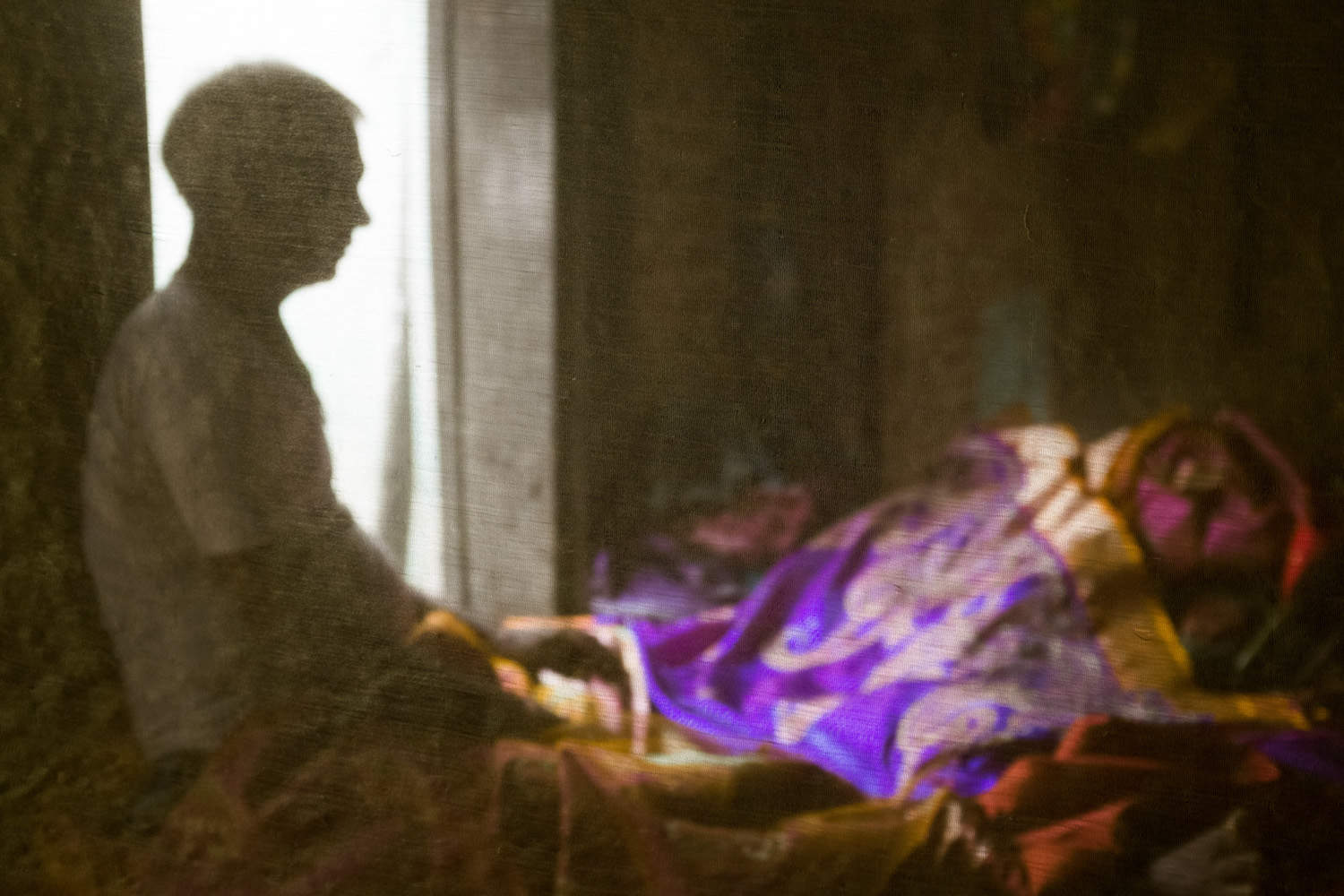
In spite of the flourishing trade, the weaver of dream sarees is still working in pathetic conditions, living a life of abject poverty and diminished health.
The Dying Lives of Varanasi Weavers
Varanasi is the oldest living city in the world. Like the rest of the world I had seen the colorful images in books and online but never had the opportunity to visit. I had imagined it as a place where art and craft thrived, having admired the exquisite Banarasi saree, hand made for centuries in Varanasi. I finally did make the trip to Varanasi last year but under tragic circumstances. I stumbled upon a report about a woman who lost her husband and two children within a year. These were not ordinary occurrences. They had literally starved to death a mere ten kilometers from Varanasi, a thriving tourist destination in the largest democracy in the world.
This led me to touch base with the authors of the report, People’s Vigilance Committee for Human Rights (PVCHR), a not-for-profit organization based in Varanasi that has been working with the poorest and most marginalized weavers. I learnt that Varanasi has lost 80 percent of its silk weavers, many of whom have had to leave the city and give up weaving to take up other low paying jobs such as pulling rickshaws or working as daily wagers. The reasons are complex but mainly to do with rising cost of production, falling demand and a system that has led the weavers and their families being reduced to indentured labor.
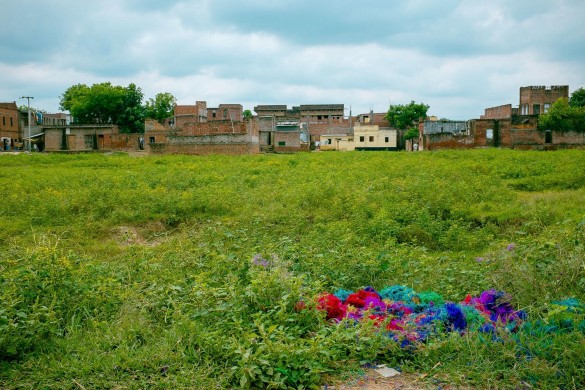
Dhannipur village in Lohta is a weaver centric locality with a population of 2.5 million. The nearest public health care center is 10 km away and most of them cannot afford the bus fare.
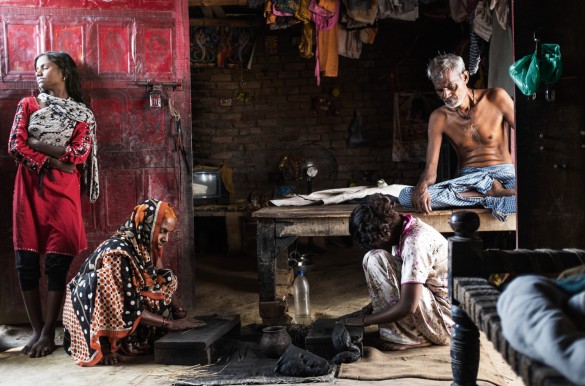
Lali Rajbhar, 65, an unemployed weaver, with his family. His wife and daughters earn a meager living by making incense sticks.
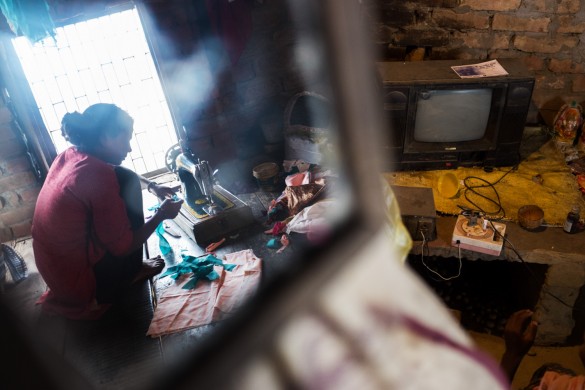
Bhagwanala Village, Sudha,18, his daughter does tailoring to supplement her family income
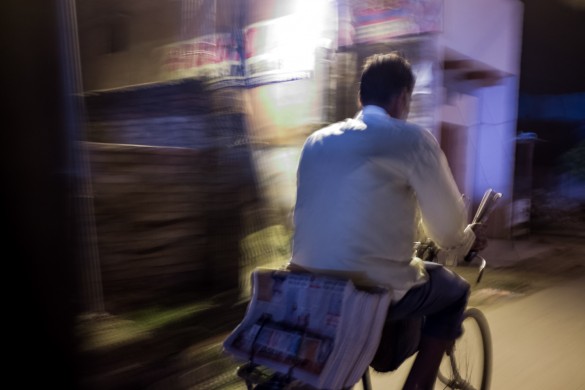
Many weavers are being forced to give up this centuries old craft and take up other low paying jobs like selling news papers. driving cycle rickshaws and labour jobs.
Health care is inadequate and unaffordable. Malnutrition affects 50 percent of the weavers’ children and Varanasi has the highest infant mortality rate in India at 78. This fact was brutally driven home to me as I learnt that two of the children I photographed during my visits died soon after.
Due to the efforts of organizations like PVCHR, the Government machinery is slowly coming into action but it appears to be a case of too little too late. A lot needs to be done urgently on a war footing, so that the children at least get a chance to live.
Photographs: Rohan Juierie | Text: Reshma Pritam Singh
Website: www.rohanjuierie.com
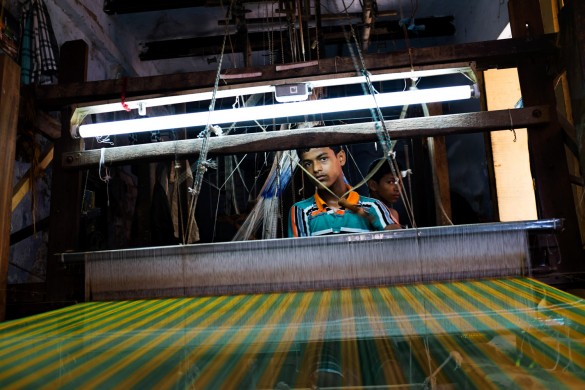
Asim Ali, 15, earns less than a dollar a day as a hired laborer. He has never been to school.
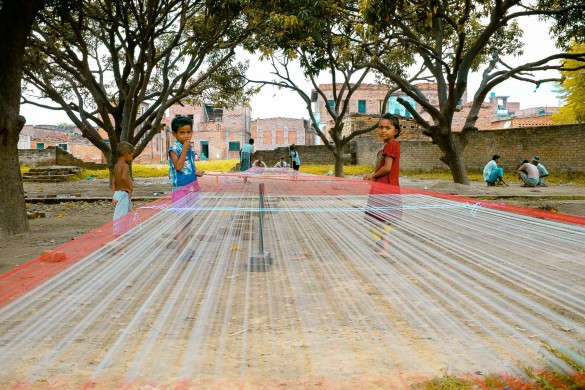
To reduce cost of production weavers involve their children in their work. Sometimes children are hired. Hired children can be sold and bought for a little amount or loan extended to their parents.
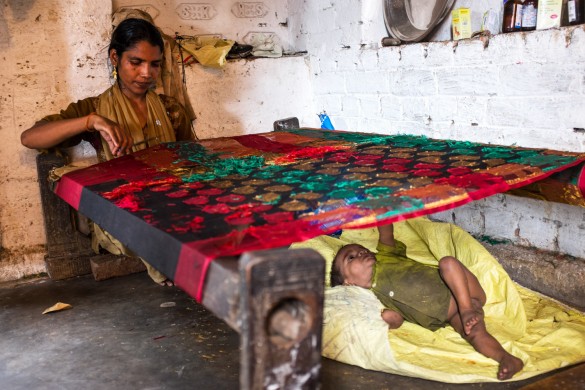
For 30 cents a day, Rukhsana spends hours on end laboring to finish an already woven saree, as her fourth child, also malnourished entertains himself.
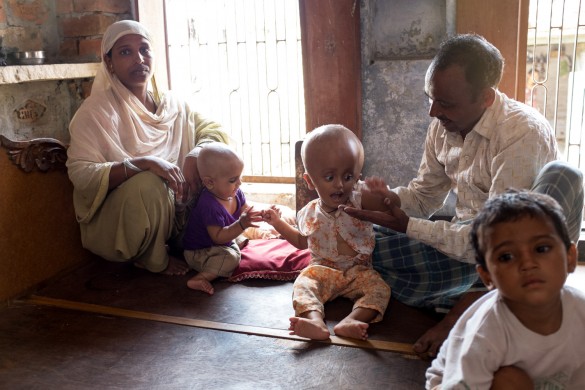
Mohammed Yakub, 35 with his family, sitting on the only piece of furniture they own. His three year old son, Tayammul has cerebral edema and is in extreme pain. He earns 80 cents a day and cannot afford his son’s medical treatment.
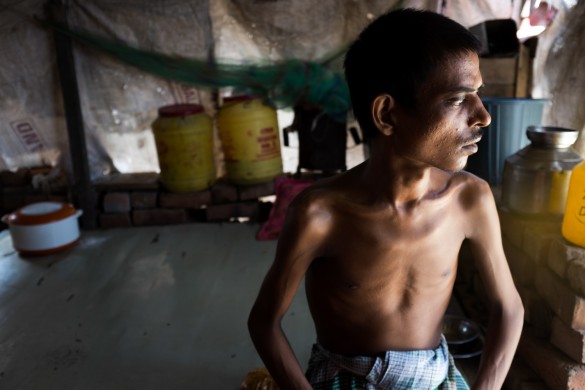
Naseem Akhtar, 24, started weaving since he was a child. He is unable to work anymore because he is suffering from tuberculosis, a common ailment amongst the weavers caused due to breathing in fibres and dust from the fabrics they work with.
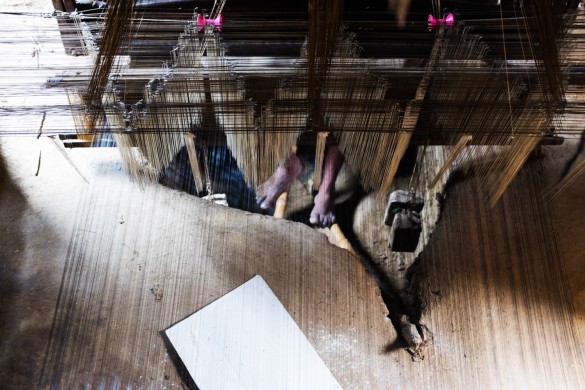
The loom system is partially embedded into the ground and a pit is made for the weaver to keep his legs. The long hours and varying temperature in the pit results in serious damage to the lower part of the body, leading a weaver to remark:
“Handlooms today are the graves of living people.”
Share

